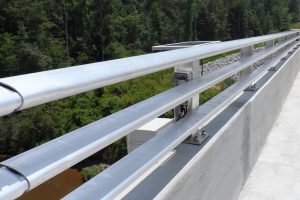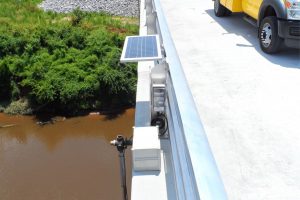
Remotely Monitored Bridge Lights
Application:
Bridge Lighting with GSM Monitoring
Products:
SL-BR (green and red), GSM Monitoring
Location:
Tar Heel, North Carolina USA

Background
North Carolina is a state with vast topographical challenges. It boasts a landscape that extends from sea level to mountainous (the Appalachian Mountains, containing the highest point in North America east of the Mississippi). Due to the varied landscape, weather conditions can change frequently and severe weather incidents are common. Such conditions make operations, maintenance and installation of infrastructure time-consuming, expensive, and difficult. Various levels of equipment and manpower are necessary to reach, repair or maintain such infrastructure, depending on locale.
Challenges
The NC DOT expends significant funds dispatching crews to remote locations to monitor the operation of bridge lighting. As the new Tar Heel Bridge was being built (replacing the prior bridge), the NC DOT was looking for lighting alternatives. They required lighting that did not require the installation of expensive electrical cabling and conduit. They also sought remote operation and monitoring to limit on-site operational status checks, necessary following severe weather incidents.

Solution
The installation of Sealite’s solar-powered SL-BR Bridge Lights removed the need to run electrical conduit, making for an easier installation. GSM monitoring allowed the NCDOT to remotely monitor light operating conditions from their offices, approximately two hours away. Diagnostics such as lantern status, battery condition and GPS positioning are sent via email, text, or viewed on Sealite’s secure web portal, providing current light status reports. Once installed, no special vehicular equipment was needed to reach the lights for status checks, saving the NCDOT additional costs in both labor and operation.
Categories
Got Any Questions?
Contact UsBenefits
- Sealite’s ability to customise products to suit individual customer requirements
- Specifically designed to clearly mark bridges over navigable waters
- Single LED Optic
- Optional solar/battery systems available
- Superior visibility and will operate in conjunction with existing power supplies
- Automatic night activation
- Complies with governing bodies such as the U.S. Coast Guard/IALA recommendations for the marking of fixed bridges over navigable waters





